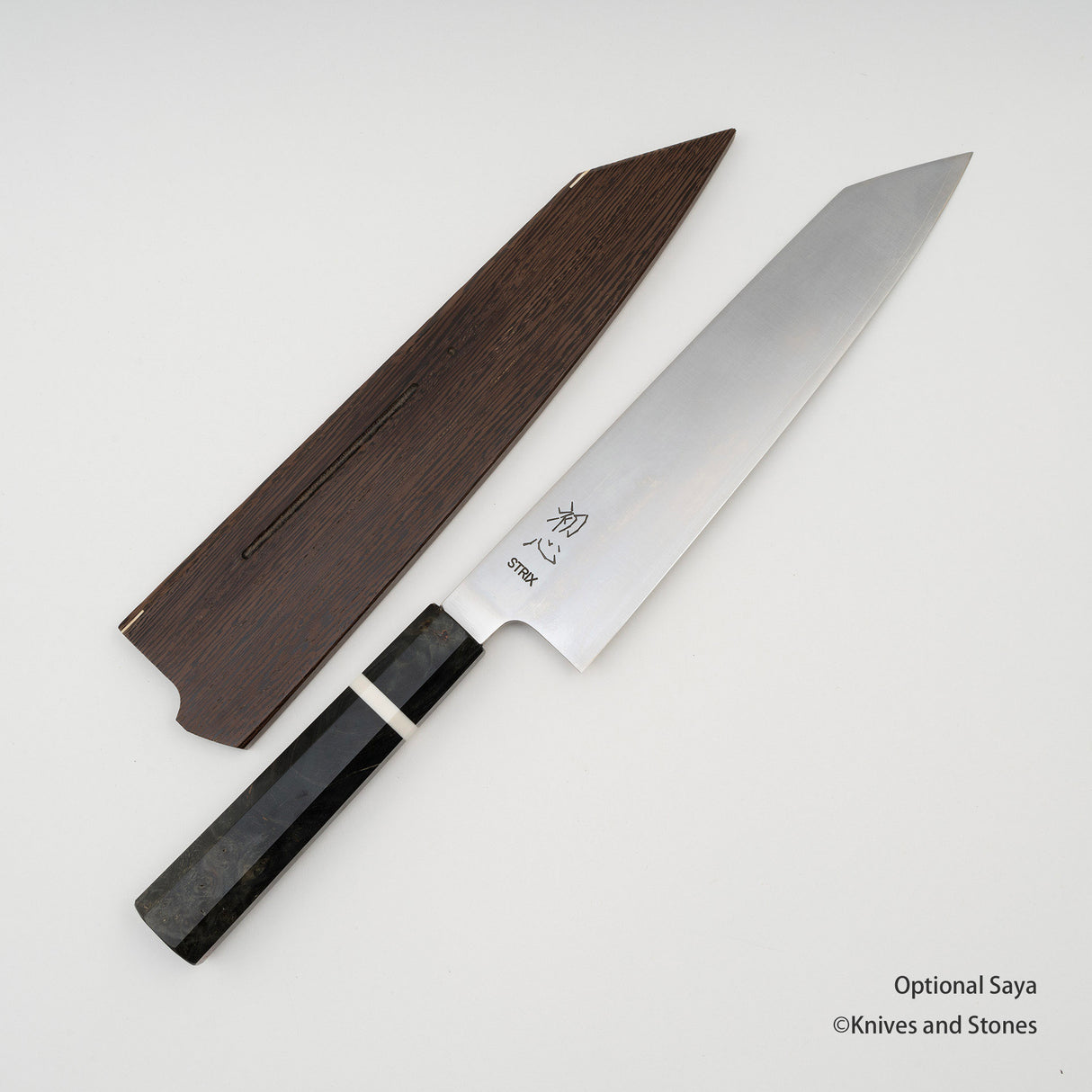Hatsukokoro STRIX K-Tip Sanmai Gyuto 240mm
Hatsukokoro STRIX K-Tip Sanmai Gyuto 240mm is backordered and will ship as soon as it is back in stock.
Couldn't load pickup availability
Detailed Specifications
| Line | Hatsukokoro by Sukenari STRIX Sanmai |
| Profile | Gyuto / Chefs Knife |
| Bevel Type | Double Bevel |
| Weight | 227 g 8.01 oz |
| Edge Length | 232 mm .9.13 inch |
| Heel Height | 52 mm .2.05 inch |
| Width @ Spine | 2.5 mm 0.1 inch |
| Width @ Mid | 2.3 mm 0.09 inch |
| Width @ 1cm from Tip | 1.1 mm 0.04 inch |
| Steel | SPG STRIX | Powdered Stainless |
| Blade Construction | Sanmai - Stainless Clad |
| Hardness (HRC) | 63 - 65 |
| Surface Finish | Migaki |
| Handle | Octagonal Birch Burl with Spacer |
| Region | Toyama |
| Best for |
|

| Pros | Cons |
|
|
|
Care Instruction
- Don't cut hard things! Japanese knives are brittle so bone hacking is a NO NO!
- Wash with neutral detergent after use, and wipe dry;
- Please don't wash knife with dishwasher, it will damage the wood handle;
- Be careful not to leave the knife close to a heat source for a long time;
- It is a lot more dangerous to cut with a blunt knife than a sharp knife!
- It is best to sharpen a Japanese knife regularly on a waterstone.



















